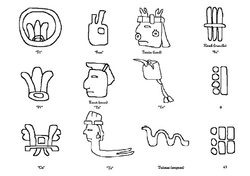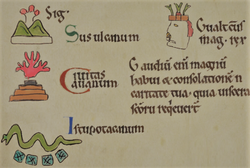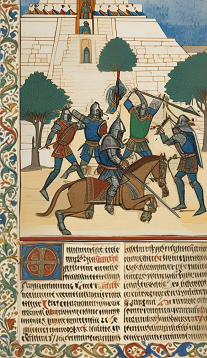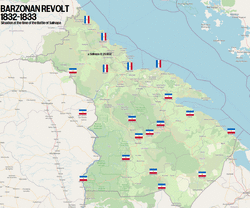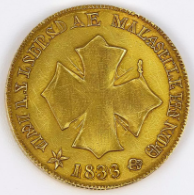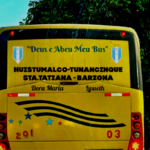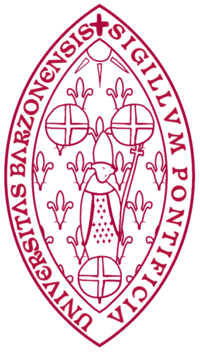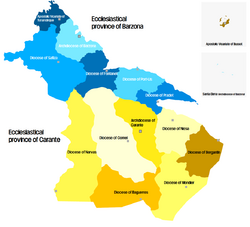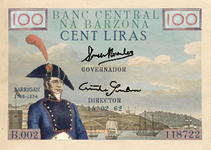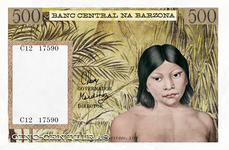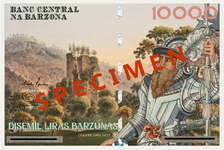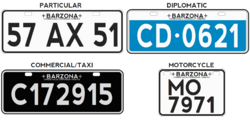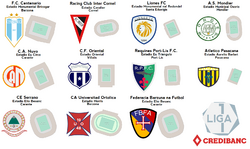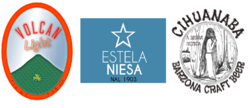Barzona
Loading map... |
Barzona, officially the Republic of Barzona is a country in southern Tarephia along the Strait of Lyc. Barzona is comprised of the mainland of Barzona along with two island departments. The capital city is Carante and the most populous city is Barzona. Barzona is divided into 16 departments, two of them are insular (island) departments away from Barzona). Mainland departments are divided into cantons, of which there are 90. Cantons and insular departments are divided into municipalities, there are 684 in Barzona.
Barzona was settled by several indigenous cultures prior to the time of colonization, with advanced civilizations and settlements. The Valonians were the first to colonize what is now Barzona, starting in the 13th century onward. The Castellanese settled Barzona in the 16th century, taking over from the Valonians. Barzona declared independence in 1817 and the entire territory was liberated from Castellanese rule in 1821. Barzona was a part of the Republic of Gran Fojenica (with Allendea) until 1833. Barzona went through a period of civil and military governments for many decades. From 1965 to 1978 Barzona was under a military dictatorship before transitioning to democratic rule.
Barzona is a member of the Assembly of Nations and Tarephia Cooperation Council.
| |||||
| Republic of Barzona Republica na Barzona | |||||
|---|---|---|---|---|---|
| |||||
Loading map... | |||||
| Motto: "Terra libre, unita e feliz" A free land, united and happy | |||||
| Capital | Carante | ||||
| Largest city | Barzona | ||||
| Official languages | Barzuna | ||||
| • Regional languages | Valonian, castellanese, various indigenous languages | ||||
| Demonym | Barzuna | ||||
| Government | Constitutional, presidential republic | ||||
| • President | TBD | ||||
| • Vice President | TBD | ||||
| Legislature | Cogreso na Diputados | ||||
| Area | |||||
| • Total | 65405.65 km2 | ||||
| • Water (%) | 14% | ||||
| Population | |||||
| • Estimate (2019) | TBD | ||||
| • Census (2010) | TBD | ||||
| • Density | TBD/km2 TBD/sq mi | ||||
| Timezone | Central Tarephia Standard Time (WUT +1:00) | ||||
| Currency | Barzonian lira (BAL) | ||||
| Drives on the | right | ||||
Barzona, officially the Republic of Barzona (Barzonian: Republica na Barzona) is a country located in southwestern Tarephia. It is bordered by Hueyapan to the north, Allendea to the west and Broceliande to the south, as well as Valaga, Paroy and Tempeira in insular areas. Barzona has a surface area of 70430.32 km² (total with territorial waters 89225.61 km²) and a population of ?. The capital city is Carante, and the largest city is Barzona.
Barzona is a diverse country despite its small size, unofficially divided into five regions, costa (the coast), serra (the mountains), selva (the jungle), marca (the march) and insular Barzona. It is ecologically diverse, with a lot of flora and fauna, beaches, mountains and highlands, and dense, humid rainforest. Barzona is a member of the Assembly of Nations and the Tarephia Cooperation Council.
Etymology
The name of Barzona comes from the Valonian Barzone, which is believed to originate from a Taqueza speaking people in the coast of the country that died out during the early conquest of Barzona. Since the 19th century the people of Barzona have referred to themselves as "Montín" or "Montines" as a nickname, the origin is not entirely clear but a popular theory is that it came from "Belmontines", used to refer to the troops of Marshal Belmont during the war of independence.
History
Precolonial era
Early cultures
| Period | Timespan | Important cultures, cities |
|---|---|---|
| Archaic | Before 3000 BC | TBD |
| Formative | 3000-1100 BC | Conchina (Conchina culture) |
| Early preclassic | 1000-400 BC | Tesunhuehueche (Santa Quiteria culture) |
| Late preclassic | 400 BC-250 CE | Sieza, Tepuyuví (Sieza culture) |
| Early classic | 250-800 | Cavana, Canaví, Cerro Forqueta, Punatecana (Taqueza), Tunancinque, Susulcan (Nawat) |
| Late classic | 800-1300 | Chichicastepeque, Eu Turrón (Nawat), Simiqueguín, Tecazaguín, Chiltepín, Candelaria (Taqueza) |
| Postclassic | 1300-1600 | Mestiguín, Masacuate-Allendea, Tacana (Taqueza), Isultepán (Nawat) |
The early history of Barzona's indigenous people is not as well known as in neighboring countries. Artifacts have been found to be about as old as 5000 BC in some area. It is believed around 3500-3000 BC the indigenous people turned from hunter-gathering to settled farming, first in the lowlands of coastal Barzona. The pre-Taqueza and Nawat people settled into villages with small huts in this period. After 1200-1100 BC is when the period of major settlement begins, the oldest confirmed site discovered so far is the Conchina (southeast Barzona), dating to 12th century BC and including two burial mounds. This era of history is divided into the formative period (3000-1100 BC), early period (1200 BC-400 AD), classic period (400-1300) and late period (1300-1600). The most famous site of the early period is the Tesunhuehueche site in Santa Quiteria in the north, despite the distance and 700 year difference it has similarities to the Conchina culture site and further refined the pyramids. Santa Quiteria is dated to around 550 BC.
Classic period
The classic period of precolonial Barzona existed from 400-1300. Most of the existing archaeological sites date from this period. Cavana is probably the first major city (atepet, or altepetl) of the Taqueza, established by the year 400 and expanded to after 1100. Cavana was the first major kingdom and invaded other towns in the south. From 650 the city of Canaví rose as a major power and they conquered Cavana and its tributaries around 700. From 740 they began an expansion into the mountain areas which led to new cities founded there in the next centuries, Cerro Forqueta Site was the major one around 800. Santa Quiteria was abandoned by 450 but the nawat speaking people that inhabited it by then may have founded Tunancinque shortly after. Susulcán rose in the Barzona city area around 600 and rivaled Tunancinque. By 700 Punatecana was established as a third major city in the Taqueza zone and they were able to stop the Canavi expansion in battles.
Around 500 is considered also the rise of the Cubutacubun people in the northwest, resisting the expansion the Taqueza and Nawat. Hunters and farmers, they lived in small walled villages and were present in the highlands of northwest Barzona. They were fierce warriors in order to defend against the empires to the north and east of their region. By 700 they were organized into a kingdom with chiefs, like the Taqueza of this period mostly of independent villages but more willing to unite as a nation to defend against invasion.
From 760-880 the Triple Cities of Teotiyolcan expanding south after uniting as a empire. Around 840 they made the city of Tunancinque a vassal of their empire and around 855 did the same with Susulcán. They tried to subjugate Cubutacubun villages but faced significant defeats. After 850 the Cubutacubun cacique Fuhuchocamiscua is named as a major leader, uniting enough villages against the Triple Cities and extended the confederation as far south as the Yavi River and north beyond the Alto River. The area around modern Sant-Cuadragesimo Hicatasupcua was as as far as they extended in the east, probably after 900
Around 880 the Triple Cities reached as far as Punatecana and destroyed the city; there was no further expansion in Barzona, historians don't know exactly why but may have included a combination of disease, distance from their heartland and fear of a major war with the Canaví empire or the Cubutacubun. The Triple Cities empire constructed Chichicastepeque around 900 as a new city to show their power and wealth, there is significant damage to the site but a lot of the architectural details and constructions are detailed and high quality. Around 1000 Taquezas founded the atepet of Simiqueguín not far from the Punatecana and began expanding in the area. There was peaceful coexistence and trade with the Triple Cities and even Canaví for around 100 years. Around 1100 instability brought by regional famines led to conflict between Simiqueguín and Canaví. Mestichiltut (fl. 1120-30) was the main leader of Simiqueguín and led an expansion of his territory, by 1130 Canaví was conquered and defeated an the city of Cavana was the southern extent of their conquest. Simiqueguín was expanded to be the center of administration of an expanding Taqueza empire. Probably around 1150, Chichicastepeque revolted against Triple Cities control and declared itself a vassal of the Taquezas. That was a major northern expansion of the Taquezas but they could not take Susulcán, Tunancinque or cities beyond the Alto River.
A lot of the history of this period, especially after 900 or 1000 was recorded on traditional bark paper codices which consisted of images and pictoral glyphs. From trade with the Valonians after the 13th century the Taqueza also used vellum or parchment for these codices. A well known example is the Codex Hautvilar, made in the 14th century (before 1360) by Taquezas in Fontanet detailing the leaders and symbols (glyphs) of the major cities with annotations in Valonian.
Late period
The Valonian colonial expansion into Barzona signaled the start of the late period. After 1200 Canaví revolted against the Taqueza kingdom, there may have been two revolts between 1200 and 1225 which one was successfully put down. Diseases brought by the colonizers affected many people and deaths became high. The people of Canaví founded a new city called Tepuyuví further in the interior in the 1230s. Around 1270-1275 Cualutunaltac (died ca. 1283), lord of Tepuyuví made an agreement with Guy de Montdidier, Marquis of Mondier (or Montdidier) and received body armor, some swords and even a few crossbows in exchange for gold and supporting the Valonians in their expansion in Barzona. Cualutunaltac took Canaví, making use of the swords and crossbows which the defenders of the city could not match. Cualutunaltac died around 1283, may have been killed by one of his sons who wished to end thew alliance with the Valonians. Sometime after Canavi is abandoned, no new constructions or inscriptions exist after 1300.
As the Valonians expanded north, Tepuyuví, Canaví and other towns were abandoned between 1290 and 1350. Susulcán was conquered around 1280 to create the city of Barzona (built east of the original Taqueza atepet). Around 1300 Tecazaguin was also abandoned, on top of the templo major the Valonians built a church and one of the other temples was used to build a monastery in the late 14th century.
Many Taqueza fled into the mountains as the Valonians expanded and cities like and Mestiguín (ca. 1260) and Masacuate and Allendea sites (ca. 1300) are major sites of this era. Tacana is the last major archaeological site of the late period, completed around 1350. Though the Taqueza continued expanding north and south the tradition of major urban and religious centers was slowly given up for smaller villages as they became more separated from the traditional bases of power in the lowlands of the east.
Medieval period
Early Valonian discovery
The coastal area and coastal-interior regions of Barzona were explored from Broceliande from the 13th century. Probably the first settled area of Barzona by the Rivagiens was the village of Sant-Miquel; the local church was consecrated around 1202. The area that is around the modern border of Barzona was know as the marche (or marca). Expansion was difficult due to resistance from the Taqueza indigenous and it took nearly decades of careful expansion. Around 1220 nobleman Hughes de Montdidier (or Mondier, ca. 1180-1242) was elevated to Marquis of Mondier, the first titled noble in present day Barzona territory. He ordered construction of a castle and a town on the Mondier (now Castellán) river around 1223-25, which may have been known as Montdidier and later Mondier. In the typical fashion of the colonizers, subsequent towns were built with a castle and walls or at least fortified to withstand attacks from the indigenous. Guy de Montdidier (ca. 1226-1291), grandson of the first Marquis was the first nobleman born in Barzona territory. He began the first alliances with indigenous Taqueza leaders who were opposed to the Taqueza empire.
By 1280 the Valonians had reached as far north as modern day Barzona city. A few battles were fought with the Taqueza empire but for the most part many Taqueza simply abandoned coastal and lowland towns, moving to the highlands and attacking and harrassing Valonian towns and trade routes. The Valonians also made an alliance with the Nanquín people of the Santa Marta islands∈⊾, the cacique of Temasquín was provided with swords, longbows, helmets and tools and he unified the Nanquín people in battles between 1279 and 1281. They stayed as allies for many years and many Nanquín converted to Ortholic, at least nominally.
Within 100 years the Valonians also claimed and started settling what is now southern Teotiyolcán and threatened their cities in Barzona. Bérenger de Lestrange (ca. 1255-1302), first count of la Barzone made an alliance with the atepet of Chichicastepeque in order to use them to help defend the city of Barzona against possible attacks by the Triple Cities. Chichicastepeque became rich, receiving cloths, swords, metal tools, chain armor but as Barzona became a formidable walled town the Valonians no longer needed Chichicastepeque, which was abandoned around 1380.
14th and 15th century
By 1340 Valonian settlers reached further west than the town of Milles but expansion was slow afterwards due to fighting with the indigenous, diseases. The Valonians also brought diseases that affected the indigenous as well.
In 1374 the War of the Nobles (or War of Cornet) broke out, the first conflict between nobles in the colonial Barzona. It started with a dispute where the Hugues de Villiers, Count of Fontanet, lent money to the Simon de Lestrange, Marquis of la Barzone and was promised the Castle of Cornet as a collateral. The dispute began over the total amount owed at the end and the Marquis of La Barzone raised an army of knights together with several nawat warriors from Chichicastepeque under their lord, known under baptismal name of Philippe. The Castle of Cornet was beseiged for three months in 1374 until a trebuchet was used to breach a hole in the walls and the defenders poured out of the castle to fight a unsuccessful battle. The Marquis was unable to capitalize on his advantage as his nahuat allies returned to their city and the subsequent battle, fought further south near the Sant-Cristove river, which ended in a stalemate. Raymond de Moncastel, bishop of Barzone forced both nobles to agree and plkead their case before the King who ended the dispute.
In 1402 or 1403 an expedition of knights sailed down the Daube River in the jungle to explore the area, but were lost and likely died from disease or animals, or were killed by indigenous peoples. No artefacts or remains have been found but in the oral traditions of some Edikanana it was passed down through the centuries the story of pale and silver men in tall canoes sailing in the river.
Medieval and early modern Valonian colonial towns
| Name | Founded |
|---|---|
| Sant-Miquel (St-Michel) | 1202 |
| Mondier | 1224 |
| Gordet | 1240/45 |
| Portín | 1254 |
| Bergantín | 1268 |
| Fontanet | 1275 |
| Barzona (Barzone) | 1280 |
| Niesse | 1301 |
| Ibán | 1306 |
| Bercil | 1310 |
| Port-Lis | 1321 |
| Milles | 1336/38 |
| Caborna (Caborne) | 1340 |
| Florencia (Fleurance) | mid-14th century |
| Pradet | 1362 |
| Baguerres | late 14th century |
| Santa Elena (Sainte-Hélène) | 1390 |
| Sainte-Clothilde (Sainte-Clothilde) | 1415 |
| Vianna (Vianne) | 1427 |
| Sant-Piero (Saint-Pierre) | 1459 |
| Santa Solangia (Sainte-Solange) | 1512 |
| Acres | 1549 |
Castellanese colonial era
Early conquest and defeat of the Valonians
In the early 16th century the Castellanese began exploring the Lyc from the east, conquering and colonizing Latina, San Marcos, eastern Freedemia and by the early 1550s were exploring as far as Teotiyolcan in early 1554. A war broke out between the Castellanese and the Teotiyolcani and thousands died in what was an ill-fated expedition for the Castellanese. The Valonians were alarmed and scrambled to improve the medieval defenses of castles and built the Acres castle to defend from the north. In September 1555 war broke out between the Valonians and Castellanese. Juan de Cornel y Mirón had landed near modern day Sant-Antonio nal Mar, believing it was an island he claimed it for Castellan. Sailing further along the coast he captured three Taquezas who told him of Valonians in the area. They were taken to the Freedemian colony of Tierra Redimida and would be used as translators. War broke out since the Valonians believed this was an invasion and troops were sent to attack Torres y Mirón from Ibán.
Castellanese returned in greater numbers in early 1556 and used the translators, which knew some Valonians to tell as many Taqueza that the Castellanese would come to remove the Valonians and this was misbelieved or falsely promised as giving them their land back. By summer 1556 there was a widespread revolt of Taquezas and the Castellanese, a fleet laid siege to Pradet and took the town. Pradet town held out from June 1556 to February 1557, the Castellanese took over the castle of Sorède and bombarded the town. Pradet surrendered not because its walls were breached but eventually lack of sufficient food and provisions and poor health conditions. From Pradet troops were diverted twice, most troops were sent north to attack Port-Lis and cut off the town of Ibán and then Francisco de las Casas y Carvajal led 1200 troops south. 2300 men under Juan de Torres and over 4000 Taquezas were used to take Port-Lis. A major blow to the Valonians happened when the Count of Fontanet defected to the Castellanese side and left Barzona open to capture. A relief force was planned to head north from Mondier but in October encountered the troops of Francisco de las Casas near the modern day village of Santa Agata Casantecana. At the end of October 1556 nearly 7000 Castellanese and Taqueza allies were laying siege to Barzona. Cannons were effectively used to destroy parts of the walls and Barzona surrended in February 1557. The city was resupplied by sea once in November 1556 but the Castellanese sunk most of the ships. A second group of soldiers from Mondier left in November 1556 but did not reach Barzona in time.
In 1557 a treaty was agreed between Castellán and Valony, the Valonians lost most of their land in the area. A new border was agreed from the sea following the Titania river to its fork with the Mondier (Castellán) river, then from the source of that river a line drawn straight to the Daube river and from there following the Daube river to its source. After the peace Francisco de las Casas continued exploring up the mountains and encountered the valley of Carante in April 1557, he founded a city called Carante, after his birth town of Villafranca del Carante in north east Castellán.
Conquest of Barzona's interior
Between 1557 and the majority of Barzona's interior was conquered and slowly settled. Cornel was founded in 1559, Gardes in 1563. Between 1558 and 1566 a large revolt against the Castellanese occurred by Taqueza of the mountains, many indigenous dies but eventually were defeated and forced further into the mountains to end the revolt. Between 1560 and 1564 Simiqueguin resisted the Castellanese, a military expedition in 1560 was defeated, the Castellanese sent more troops along with Taqueza speakers and translators to settle a peace in 1561 but the translators were murdered and Castellanese were forced to retreat due to having less troops. In 1564 Simiqueguín was finally conquered with 1600 troops and knights, marking the end of the last great Taqueza capital. Tunancinque and all the land north of the Alto River continued to be held by the Teotiyolcani but raids by the leader of Tunancinque across the Alto river in 1606 led to a punitive expedition against the Teotiyolcani, by August 1607 Tunancinque was captured and the Castellanese held all the way up to the river making the modern Barzona-Teotiyolcan border.
Between 1559 and 1570 the Cubutacubun resisted the Castellanese expansion. Many died in the fighting but were unable to stop their advance.
Between 1612 and 1615 there was a major revolt of Cubutacubun led by cacique Piquinucafuy, they destroyed the village of Cerrovert and led a guerrilla style campaign. Piquinucafuy was captured and executed in 1614 but the Cubutacubun fought for another 14 months until the last remaining warriors fled across the Alto river.
Independence and Gran Fojenica
Congresses of Mondier and Taseseque
Anti royalist activity began in Barzona in the end of the 18th century. At first was a lot of political discourse, publications against the injustices of the colonial intendant and government, complaints over the status and treatment of criollos vs. Castellán-born citizens. In 1808 José María Figueroa y Blanco was appointed as intendant, he was considered harsh and alienated a lot of criollos with his policies. The prominent citizens of Carante sent a letter to the king to ask to replace Figueroa. In May 1812 a revolt began in Mondier against Figueroa y Blanco which threatened to become a general revolt. Knowing it could lead to more insurrections to the other colonies and cities Figueroa y Blanco agreed to resign and a congress was declared in Mondier to try and resolve the differences between the two sides. The criollo citizens demanded equal opportunity to high military and political positions but the Royalists could not agree to anything without informing the King and receiving his consent. This led to a impasse and the royalists feared the criollos might try and take over Mondier and try to force their way. So instead they sent 400 troops to occupy Mondier and arrest the criollo leaders. Fernando Calderón was detained and executed in 1813 but most of the criollos including a young Francisco Figueras Costa fled north.
In Taseseque (today Belmont, Serranía Dept.) the Congress of Taseseque was formed and in their plan the patriots of 1812 declared their points of independence of Barzona, named as the Loyalist State of Serranía but pledging allegiance to the king of Castellan as monarch of Barzona, the suporemacy of the ortholic church, equality of criollos with Castellanese from the mother country. They raised a small unit of 500 men but found a lot of indiference and opposition from mestizos and indigenous who felt left out and preferred the status quo. The Battle of Taseseque was fought in August 1812 between royalists and the patriots which resulted in a royalist victory, many of the provisional government of Serranía was captured.
Congress of Fontanet and Kingdom of Barzona
Afterwards many of the remaining leaders fled to Fontanet which at this time still had patriot sympathies. General Belmont and a smaller group fled west to Allendea to try and find support to expand the war into Carante. José María Figueroa y Blanco returned to Carante as royalist governor and led a campaign of repression against any suspected rebels. Allendea broke into full war at this time and the royalists were determined in preventing the conflict from spilling into Barzona any further. Meanwhile patriot leaders were divided over what to do, some felt it impossible to continue the war, others wanted to fully separate as a republic and sever all royal ties and a few felt if they got word to the king about his army's terror in the colony he could be persuaded to make changes while keeping him head of state. Mateus Barrigan, former Ingerish navy sailor that moved to Barzona in 1780s appears in this time in the summer of 1812-13 and at this time joined with Francisco de Almonte y Carvajal, royalist commander of Fontanet and fellow Ingerish born Felipe O'Byrne. They were suporters of the camp in favor of the King but against his royalist government excesses and the abuses of the main royalist army. They eventually won out among the patriots, especiaqlly since Almonte y Carvajal had the only real body of troops able to fight. They declared the Kingdom of Barzona in October 1812 with the King of Castellan as monarch, independent of the Carante royalist administration. They sent letters to the King pleading their case.
There was a campaign drawn up to head up the coast and try and take the city of Barzona but they were forced to prepare for a possible siege when it appeared Figueroa y Blanco was sending close to 2000 soldiers to take back Fontanet. The patriots sent a few people intop the countryside and interior to spread the word, raise insurrections and a relief force for the siege. From January-April 1813 the city was under siege and left in a difficult position. Few people rose up in the countryside and Almonte y Carvajal was forced to surrender. He was captured and executed together with Felipe O'Byrne and other patriot leaders. Barrigan and a few others was able to escape death by dressing up as low ranking soldiers and just being detained and released after.
In 1815 Belmont attempted to return to Barzona and start a revolt but was defeated by a small royalist force.
Beginning of Independence war
In late 1816 Belmont made a return to Barzona and began arming peasants and organizing ally forces. In the spring of 1817 the criollos of Carante and the highlands under Juan Piero Belmont began a revolt against the Castellanese, inspired by the similar war in Fojenica. A group of 40 dedicated loyal to Belmont took the 9 June 1817 the state of Carante was declared as a country after defeating the royalists at the Battle of Chilacana. By the end of July 1817, Cornel, Gardes, Piscua, Sinsontecana and other highland towns were captured or defected to the patriot side. In August 1817 was the famous "Meeting of Piscua", Belmont met with Mateus Barrigan and Francisco Meléndez y Rondelet, Marquis of Mondier who conspired to expand the war. The Marquis of Mondier commanded troops in the southwest and defected to the patriot side but was unazble to convince the soldiers inside of Mondier city to switch sides. Still nearly 3000 troops joined the patriot cause overnight. Barrigan announced he would try and launch a navy to harass coastal towns and shipping and be able to secure overseas supplies. He also wrote to his contacts at Ingrea to try and recruite soldiers and sailors for the cause. At this meeting it was agreed nothing less than full independence would be accepted and no more recognition of the King of Castellan.
In September 1817 Gen. Belmont joined Carante into the new Gran Fojenica republic, since it was seen as the most effective way to best preserve the independence. Progress by the patriots was slow in 1817 and 1818, losing several battles and many soldiers who abandoned service or ended their contracts. In the summer of 1818 the first Ingerish troops arrived in Barzona, founding the 1st Ingerish Regiment
By the summer of 1818 most of modern day Carante, Esquibel, Serranía, Daube and parts of Marca and Niesa departments were under patriot control. The siege of Mondier in January-May 1819 was an important point of the war. The royalists had been building new outer fortifications which were aimed at the south so the patriots took advantage to besiege the inner walls and avoid the newer ring forts at the south. A relief force from Bergantín tried to save the town in April 1819 but was defeated and shortly after the city was forced to surrender.
Campaigns of 1819-20
By the end of 1819 most of modern day Barzona was under Gran Fojenican control except for the coastal area. The fall of Mondier separated what royalist forces remained in the interior from their main area along the coast. The walled towns like Barzona, Bergantín were considered too formidable to attack from the sea and others like Fontanet and Port-Lis required combined naval-land operatins with marines/naval infantry which Barzona did not have yet. At the end of 1819 Admiral Barrigan sent his assistant, Ship of the Line Lieutenant Carlos (Charles) Bourne to Ingrea to recruite more Ingerish to come and established a 2nd Ingerish regiment which was focused to serve on ships for the naval campaigns.
Mateus Barrigan led the small Gran Fojenican navy and scored a major combined victory when the town of Bergantín was captured in April 1820. Most of the coast was quickly conquered in the next months as towns revolted or commanders changed their alliances. In 8 July 1820 was the famous Siege of Fontanet, where field cannons were placed to try and attack the walls. Cannonballs flew above the Tancredo River mouth as both sides tried to push the other back. A few holes in the walls appeared during the night and Barrigan ordered 2nd Ingerish troops to sail across on rowboats and climb over the walls. Famously in this event is the story of María Victoria Pilpa (Victoria na Pilpa), indigenous woman that was sympathetic to the independence and was snuck into the town to support republican activity inside during the siege. The legend says she approached the wall with a major gap in the night with two candles, signifying to Barrian's troops that there was a hole to enter inside. By the morning all of the city was in patriot hands and in the morning the few holdouts at Fontanet castle also surrendered.
Despite this there was still royalist activity in the interior, the most notable under the commander Arredondo who led about 400 soldiers raiding and skirmishing in Sant-Martin department until Arredondo was mortally wounded in September 1820.
Siege of Barzona
By August 1820 only the Barzona city area remained in royalist hands. Protected by earthworks in the interior, the Punta nord and Sant-Martin fortresses and the A Rocha castle it was too formidable to attack directly. In the previous months many royalists fled into the city and rapidly increased the urban population. The patriots launced a siege from land the naval forces under Adm. Barrigan attempted a blockade from the sea. Reinforcements and supplies were sent from the land and could go through the blockades but slowly fewer and fewer were arriving and got through to the defenders. Disease spread through the town and many people died and many of the poor were forced to eat rats and dogs as the situation became difficult. In April 1821 a truce was held and Intendant Manuel Sánchez de la Cruz agreed a surrender if the Castellanse commanders and soldiers were provided safe passage to return if they wanted. On 23 April the Royalists surrender.
But, the night of 22 April the commander of the Sant-Martín fortress and island, Osorio Salazar reneged in the surrender, sent some cannons and ammunition from the Rocha castle and refused to surrender in the morning. It was now the most powerful fortress in the Barzona harbor and had the highest view of the area. Several bombardments happened in April and May but the Sant-Martín Castle was too powerful to destroy. In Castellán they did not recognize the capitulation of Sánchez de la Cruz and said he had no authority, they sent ships with additional 1300 men to Barzona who ended up resupplying the fort. In June the royalists attempted an invasion of a Rocha castle but failed and lost many men. Disease affected the castle defenders and the Gran Fojenicans began to plan an invasion of the island. In August 1821 the island was attacked by 2600 Gran Fojenicans against 1900 defenders. The castle surrendered in September 1821 when artillery was placed by the attackers on the north side of the island and inside the castle soldiers mutinied.
Last attempts at reconquest
There were attempts planned in 1822 and later to retake the area around Barzona city, there was still considerable royalist sympathies. It was believed with enough troops securing the forts around Barzona's harbor they could cripple a large part of Gran Fojenica's economy or force cities of the Barzona coast to defect. In June 1822 the naval Battle of a Rocha was fought off the coast between 12 vessels, the Gran Fojenican navy suffered and several ships were sunk (3 or 4, but only the "Libertas" shipwreck has been found). Castellanese landed across from a Rocha castle, planning to march across the peninsula and cut off the fort. But, the artillery from the forts kept most of the ships from landing, only a couple hundred soldiers from one boat reached the shore and quickly surrendered after a brief battle. No civilians rose up in support of the invaders, despite sympathies. There may have been plans to invade afterwards but no attemps were actually taken.
Lucerist revolt
In the 1820s there were always issues and tensions between the Gran Fojenica government and the provinces, over language differences, favoring political positions to people from Bervoya, Central Fojenica, Carante and lack of pwoer and autonomy offered by the constitution to the provinces. In October 1826 Colonel Manuel Lucero y Quiroz started a revolt in the Barzona province in opposition to the Gran Fojenica government. Together with 600 troops and some naval cadets he took over the castles in the city and declared a separate state. President Julio Peort and Commandant General of Carante Count Lucio Belcamp began to raise a 1500 man army to march to Barzona and restore order. In response Fontanet, Safiza, Tunancinque and other towns declared themselves for Barzona and Col. Lucero apparently was looking to get a Ulethan prince to be King of Barzona to secure support from a foreign power. The revolt failed by March 1827 since Admiral Barrigan refused to support Lucero's revolt and no Ulethan country supported it.
Count Lucio Belcamp, the Commandant General of Carante was declared vice president of Gran Fojenica. and seemed to end major revolts for the time being. In August 1828 a mutiny by sailors was put down in Bergantin and conditions for sailors became poor over the next years.
Barzonan revolt
Over the early 1830s there was more dictontent over the taxation, diverting resources to Fojenican ports instead of Carantan or Barzonan ports among other issues. In November 1823 leading citizens and troops seized the major forts and barracks of the military and over the next weeks more cities declared themself in revolt to the government. Sailors mutinied and in this case Admiral Barrigan supported their demands and said he would travel to the capital to plead the naval case with the president and vice president. Vice President Belcamp organized 500 troops instantly to rally with over 1000 troops in Carante and march to Barzona. In December 26 troops organized in Montesanto and marched to Safiza. Outside of the village of Sulinapa 1700 government troops met 1500 rebel troops. Despite the superior numbers of the government troops mistakes on the right flank by Capt. Figueroa led to a break in the lines and over 200 soldiers died or were wounded versus only 60 rebels. The victory of Sulinapa saved the city of Barzona and more towns rose up in opposition. In this period the Gran Fojenican flag placed vertically was used as a symbol by the rebels.
The intent was to declare Colonel Manuel Lucero as leader but eventually the troops and sailors in revolt proclaimed Admiral Barrigan as supreme commander, he had never led troops, only sailors so relied on experienced Captains and Majors. The rebel intent became to secure Carante and the highlands. A second column of soldiers from Gran Fojenica marched through Carante and both forces met outside of the town of Santa Tereza on January 23. Rebel troop numbers were decimated but a few soldiers were able to cross the Santa Tereza river with a cannon to attack the Gran Fojenicans from the rear who broke their ranks and began a retreat into the mountains. Eventually the rebels caught up with them at the town of Sant-Francisco on the Caracol river. There was a lot of fog and rain and lots of confusion, Vice President Belcamp was nearly captured. The battle was a draw since the rebels couldn't take the town and secure the way to Carante, but the government side began to lose troops to desertion over the night and the remaining force went to Carante where many leaders and families fled west. In January 30 the rebels entered Carante and declared the establishment of the South Tarephian Republic with Admiral Barrigan as president. Count Lucio Belcamp fled towards the Gran Fojenican capital to secure more troops and return to fight.
After the fall of Carante many more cities declared themselves for the new republic. Two more battles followed, at the Battle of Sant-Simeon 2600 Gran Fojenican troops faced 3400 South Tarephian Troops, the south Tarephians won the battle and Count Belcamp was captured and arrested. The South Tarephians then moved to attack Casar and Eu Volcan and then follow the Yamis river down to take Montesanto but they were stopped and defeated and could not take Casar. A truce was declared shortly after. All the major cities east of the Yavi River fell to the rebels apart from the town of Nárvas.
19th Century Barzona
Lucio Belcamp returned to Barzona with a loyalist Gran Fojenican army of 500 men in July 1833 but he was defeated and captured. President Barrigan had Belcamp detained. In 1834 Admiral Barrigan died and was succeded by Francisco Figueras Costa. He released many Gran Fojenicans including Lucio Belcamp in a general amnesty. In 1839 Lucio Belcamp deposed the president and established the first Republic of Barzona, his second term as president. Belmont worked with the criollos and coastal politicians to agree the name of Barzona instead of Carante for the country, but with a transition to slowly move the government offices from Barzona to Carante (the Accord of Fontanet). He also announced he would only rule for two years before transitioning to civilian rule. Belcamp's second term led to a Barzonan constitution and in 9 December 1841 the first direct election took place in Barzona. Antonio Nicollet (Marquis of Barzone) was elected for the Conservatives. Nicollet quickly announced he was ripping up the Accord of Fontanet and will keep the capital permanently in Barzona. On 12 March 1842 he was deposed by Belcamp for trying to destabilize the republic.
Belcamp was assassinated in April 1843 and Belmont e Tárrega of the Liberals was briefly president until elections of 1844. Antonio Nicollet was elected and led to a decade of conservative rule and peaceful transitions of power.
In the 1850s there was renewed interest by the Conservative presidents of Barzona to recreate a new Gran Fojenica. Negotiations between diplomats and ambassadors was good and in 1855 a Lycene Republic was declared. Barzona president Eusebio Verrier traveled to Allendea to sign the treaty but was assasinated near the town of Santa Blasina. The Liberals under Arthur Fontenoy delcared a coup, took power and announced the United States of Barzona.
19th and early 20th century
Civil war
In 1889 a brief civil war broke out between the ruling Liberals and the Conservatives, Conservatives revolted against plans of president Eusebio Tempines to reduce the presidential power and change to a parliamentary republic without following the constitutional processes. In January 1889 conservatives of Barzona raised a militia of 500 soldiers to oppose the government and take power. On 6 April 1889 the Battle of Fontanet was fought, it was an inconclusive result but 250 Conservative soldiers and 400 government soldiers died. On 30 April 1889 800 conservative troops fought 4000 government troops near the village of Sincana. The battle was disastrous for the government due to many tactical mistakes. Panic took place in Carante and there was many desertions taking place in the army. In order to prevent a collapse of authority, General Piero Esquibel led a coup on 14 May 1889, taking power, dissolving the congress and declaring the Republic of Barzona. The Conservative troops were appeased at least.
General Esquibel's coup led to nearly 4 years of miliary government with 3 different presidents. The military government helped push a new consitution which formed the basis of today's consitiution, among the many points is placing the military under full government control, setting the 5 year period for presidents and congresspeople. In January 1893 elections were held, former military captain Domenique Fortuna was elected for the Conservatives. The next 35 years would be considered a period of economic growth, political stability and a general rise in quality of life in the country.
At the end of the 19th and early 20th century the Barzonan government becan encouraging immigrants from Uletha or other parts of Tarephia to settle border areas of Barzona and help secure its claim to those areas against Allendea and Teotiyolcan. Places like Nuvo Tumbaco Canton were settled by Kalmish, Costa Azur nalla Selva and area by some Costazulences among others.
Dictatorship and civil war
Start of the dictatorship
Despite a 20 year period of Conservative domination after the Martell dictatorship Barzona was a prospering country, elections were generally free and fair and economic growth was significant to raise the standard of living. President David Salas was assassinated in 1957 by a dissatisfied worker but the government was not worried. The military was also placated by the government policies and basically only operated under the rule of law. The election of Julian Delbonis to president, of the Liberal party and the peaceful power transition worried some officers in the government, who thought he would be the start of leftist policies and collapse of Barzona's stability. His government did not have a significant majority in the congress but was able to pass popular policies that the working and rural class supported. By 1965 it looked likely he might be reelected and a month before the scheduled election he was assassinated in a coup and junior military officers formed a junta to take power and avoid a catastrophic leftist destruction of Barzona. The junta announced it was taking power only as long as needed to make sure Barzona was safe and they could organize elections.
Gabriel Passos Ricard took power as main leader in November 1965. By then the junta had dissolved the congress, removed some rights in the national security interests and began to prosecute leftists that would destabilize Barzona. Many musicians, writers, artists criticized the government in protests and through their art but were often detained, arrested, even killed or disappeared.
From 1968 the number of protests increased as it was cleared the military government was becoming more repressive and there was no real plan to transition to democracy. A major protest of workers and students took place at the Piaza nalla Republica on 16 May, maybe 10000 people filled the plaza and the streets but chaos erupted when troops sent to end the protest opened fire and nine people were killed. Industrial strikes paralyzed Carante, Barzona, Mondier in the summer of 1968 and in Barzona they were put down violently by the military.
In March 1969 a soldier was killed by a driving car and others were shot at at the Piaza nalla Republica, the government responded by increasing the armed presence in Carante and barricading the streets around the main plaza and the government buildings. Several large strikes occurred also in June and October, and a large cement factory in Villalis was petrol bombed by workers, leading to a state of emergency in the Barzona city area until January 1970.
Beginning of the conflict
In mid-1969, Esquedra Republicana na Barzona (ERB) was founded by rural farmers, students and working class dissatisfied by the government repression, erosion of civil liberties and felt that in the current path Barzona would implement martial law and destroy the country. Jaime Castell, Sebastian Encines, Kiko Santana and Genevieva Margueron were the key leaders. ERB was at first based in the Piscua (now Uneda Nacional) area and made an announcement through press they will fight the government in order to prevent more oppression. A group of ERB militants launched the first bullets of the civil war, attacking an army security post near Allendea (Serrania) in November 1969 to show the government they were serious, six soldiers and 2 insurgents were killed. The government responded with an operation with commandos, using helicopters to bring 40 soldiers to Piscua. In order to terrorize ERB they decided to attack the town (3 January) during the Christmas season to stop the insurgency quickly and punish the locals. This was the second deadliest attack of the civil war, the local priest, Father Ibarra hid about 200 people inside of the church but he was killed trying to negotiate and the church was attacked, together with further fighting and shooting over 600 people were killed.
Instead of ending the insurgency the attack horrified a lot of rural people, workers, students, activists and the numbers of ERB quickly rose. Forzas Armadas 3 na Janvier (FA-3) was formed in the aftermath of the attack by students and dissatisfied soldiers in Fabregas. While ERB began regrouping after the Piscua attack and training new recruits in the jungle, FA-3 began planning an attack in Carante. They decided to attack the building of the Guarda Civil (civil guard), the paramilitary police since it was easier to get to than the important buildings in the city center. A car exploded outside the building on 7 April 1970, shattering windows, injuring at least a dozen people and one death. The capital was quickly put on lockdown, police and military checkpoints everywhere and 3 days later the military announced martial law in all of Barzona. By the summer of 1970 ERB had close to 1000 troops and was in control of areas in Selva Department (now Yavi Dept.) and Serrania Department, especially the towns of Piscua, Santa Virginia, Buna Vista, Sant-Josep Ispilca. ERB checkpoints existed in the road between Allendea and Nárvas, also on the Pasacana-Tacos road, making road driving in the area difficult and dangerous. The growing rainforest tourism was killed, since it was difficult to ensure the safety of tourists in areas where ERB controlled or was active.
Barzona Libre (BL) was founded in 1971 in the northwest of Barzona by Juan Torres, Marco Antonio Benavides, Daisy Milena Tocarruncho, Franco Sastoque in Sant-Martin Department as a socialist political organization to protest the government and military. Initially was committed to non violence but when the Guarda Civil arrested Torres and other members and “disappeared” them for no reason, BL began to arm themselves. In 1971-72 a lot of BL’s attacks were low intensity operations, attacking police posts, farms or large and rich people to give back to the indigenous and poor.
1972 and 1973 army operations
The army began planning major operations against ERB primarily and also BL. Right wing paramilitary groups, most famously Forzas nalla Patria (FNP) were founded in 1971 and throughout the early/mid 1970s launched attacks on suspected leftist areas and against leftist rebels, going beyond the scope of actions the army could officially do. Over 6000 soldiers were used for a major sweep of Yavi and Serranía departments starting in March 1972. The forward presence of ERB was in Tacos, at least 800 troops were in the town area and the army first used artillery against the town, destroying many homes and forcing a lot of people out. When the army came in they killed at least 35 remaining civilians and disappeared many more. The army continued to Eu Eden and Buna Vista, in Buna Vista 60 soldiers died and 196 ERB guerrillas died in the biggest battle of this operation, and may rebel weapons were seized. The army continued to Piscua mostly unopposed and took the town and declared ERB destroyed in September. The army abandoned Piscua shortly after but the ERB members still operated and there were a lot of low intensity attacks on police, army checkpoints but for the time being did not have the capability for a large scale attack. The army finalized operation by taking Santa Virginia in November 1972, the army led shortly after and FNP paras entered the town and killed 36 civilians accused of having links to rebels. Most of ERB fled south and west into the jungle and the highway from Nárvas-Carante was fully under government control for the first time in over 2 years.
In May 1973 the army launched a second operation in Sant-Martín Department against Barzona Libre. The army attacked Santa Ana Cuhuma, center of BL operations and killed over 600 BL guerrillas and at least 300 civilians, forcing BL nearly destroyed BL’s fighting power and saw a lot of civilians killed and many farms burned and destroyed. The number 3 of BL, Daisy Milena Tocarruncho was captured, tortured and killed and many BL fighters fled into Allendea and Hueyapan.
ERB and BL alliance
The major army operations proved to the different guerrilla groups that they needed to work together in order to have any change of defeating the army. Sastoque and M.A. Benavides met with Kiko Santana and Encines in August 1973 and announced a formal alliance and joint command. They began rebuilding, training, smuggling weapons into Barzona to plan for a new offensive.
At the same time the Frente na Liberacía nal Poble Barzuno (FLPB) was being founded, a group founded mostly by rural farmers and some ex-soldiers in northern part of Yavi Department. The group first became known when they attacked the military base of Santa Eduvigis, they never took the base but killed 25 soldiers and lost only a few themselves. FLPB allied themself with BL and ERB shortly after. They were involved in vicious attacks in rural areas, against landowners and
In April 1974 the guerrillas launched the "Tocarruncho” general offensive, a major attempt to take back territory and push more at the heart of government controlled zones. From April to August 1974 guerrillas took back Santa Virginia and Piscua, reestablished themselves in Casar and Cerrovert cantons (Sant-Martin dept.) fought and attacked military in Allendea, Gardes, Cerrovert and Safiza and destroyed 4 aircraft in the Nárvas air force base. The military succeeded in stopping ERB in Cornel and forced them back to Allendea but they could not cross the Allendea river to push them back more. FLPB attacked the Santa Eduvigis base again, forcing the military out and even taking control of the town and nearby Penianera border crossing. Four helicopters at the base were destroyed or taken by the rebels.
There were major changes to the military government and even more paranoia since they could not believe the rebels could get to within 50 km of Carante almost unopposed.
Forza Armada Revolucionaria Urbana (FARU) was founded in 1975 by more radical supporters of ERB who believed that if the guerrillas couldn't take Barzona they could at least create terror within the city to force the government to concede.
1978 ceasefire
By 1977 Barzona’s civil war had no end in sight. The government forces campaigns, use of commandos, aircraft and bombing of rebel positions and areas did not fully defeat them, and the continued fighting led to supply problems in most cities, disruption to normal life, shortages of food and basic necessities, inflation. Carante was in a state of lockdown for 7 years by then and the citizens were desperate for its end and small scale protests began taking place with frequency not seen since the late 60s. The Guarda Civil responded to a student protest and occupation at the National University on 5 October 1977 with violence and 45 students were killed and at least 35 injured. The city was paralized for the next weeks with strikes, student protests, serious disruptions to transit. On 16 October a large truck ran through barricades in the old town of Carante and In order to try and restore normality in the city and prevent a total collapse of the government Col. Henderson Grenas' government began reaching out unofficially to the guerrilla leadership to try and broker a ceasefire.
Before Christmas 1977 the government announced it began discussions with the guerrillas to the public and in January it was reported that on 14 February 1978 (St. Valentines) all sides would cease violence and elections would be held in July for a civilian government. The ceasefire took effect but there were many irregularities, a lot of mistrust and frequent violations. It was not helped by the fact that the government did not invite FARU to the discussions, and FA-3 did not sign on because they were not satisfied with what the government said they were doing and actually did. ERB put forward a lot of candidates and declared Sebastian Encines as their candidate for president. The military and political establishment backed Felix Casamont, a more moderate leftist politician who was likely to be supported by most of the urban population and a strong candidate to defeat a takeover by ERB. Felix Casamont was elected president and ERB denounced violations of the electoral process. Because of this distrust between both sides was at a record low, ERB was certain that the government wouldn't truly honor their promises at peace and the government became more certain that ERB and BL didn't really intend to disarm. FNP surprisingly agreed to disarm in 1979, the organization was officially disbanded but likely many members still operated independently against suspected leftists. Major violence did not take place between 1979 and 1981 but after 1980 BL and ERB began smuggling in more weapons to replace those they handed in as part of the disarmament process. A lot of the paramilitary and death squads were disbanded but a lot of the ex-members continued to exist unofficially and replaced government weapons with others illegally brought in.
Final peace process and end of conflict
In December 1980 the government uncovered a major weapons cache in Sinsontecana and accused the rebels of plotting to destabilize the peace process. The government responded with more troop presence in Carante and Serrania department. ERB and BL released a statement condemning the government actions since they are just placing troops to facilitate taking power and deposing the elected government. The government became certain that the guerrillas were planning a new offensive against Carante and in order to prevent a total collapse of order they deposed president Casamont in a "temporary situational control" on 3 March 1981. BL and ERB responded by opening fire against soldiers in Allendea, Belmont and Safiza shortly after and declared they would push to Carante.
On 21 April 1981 was one of the deadliest events of the second stage. A new airport being built for international travel and military use was attacked by combined guerrilla units, 28 soldiers were killed and several contruction workers as well. Two helicopters were also modified to carry bombs, both were shot down but one of them dropped bombs and destroyed part of the runway.
Junior officers led a countercoup on 27 May 1981 and restored president Casamont and announced they would cease major operations and invited the guerrillas back to the table to discuss a new ceasefire. In July all sides met [in tbd] to discuss final and lasting peace process. ERB, BL, ex-FNP paramilitaries and the government were all parties. When FA-3 announced they would declare unilateral ceasefire in August they were involved in the peace process. On 15 September 1981 a general ceasefire and peace talks were announced. After what happened between 1978 and 1981 the guerrillas would not instantly disarm and part of the peace process involved a 5 year monitoring period where all sides agreed to stop armed operations and violence and monitor to avoid further breakout of violence. There were still many irregularities and breakouts of localized violence. The biggest issue was with FARU, which did not trust the government and refused to cease its activities unless the government agreed to disband the military along with the guerrillas. The government emphatically refused, saying disbanding the military would allow guerrillas to fill the vacuum and take power.
FARU expanded its activities inside Barzona department as other guerrilla units kept reducing the frequency and intensity of armed actions. The government forces were put in a bind where they could not leave FARU free to cause terror but also did not want to make it appear that they were renewing the conflict and trying to derail the peace process. On 22 November 1981 paramilitaries tied to the army caused a false flag operation, using Nawat indigenous people to bomb an army command post in Chichicastepeque and open fire on a army checkpoint on the Barzona-Santa Ana Pical highway. It is unknown if the army was aware it was a false operation or not but eitherway a state of emergency was declared, 4000 soldiers were deployed around the Barzona department and between 1981 and 1983 at least 400 mostly indigenous people were killed on suspicion of guerrilla links in raids on villages. This was done with the government committed to ending the violence and attempting to separate the flare up in Barzona department with the largely quiet conflict in Serranía and Yavi Departments.
FARU responded with force, leading to dozens of small and larger attacks on police, military and other targets. Many Nawat indigenous joined FARU and set up their own armed forces, but mainly to protect themselves against government forces and not to expand the conflict. On 19 July 1982 the Credibanc building in Barzona was damaged by a car bomb that shattered many windows, caused structural damage and injured and killed 39 people.
The government still attempted to deescalate in negotations (despite the reality on the ground). By September 1982 the government ended the state of e mergency and announced the end of searches to indigenous communities if they turned in weapons and agreed to refuse to support FARU's violence. Though wary, indigenous leaders were generally open and after 1982 violence against the indigenous was largely ended.
The backlash of the FSA consulate bombing, attack on the cadets ended most of the popular support to FARU and made it appear they were the only party unwilling to seek a resolution to end the war.
FARU members opened fire on a police checkpoing near Fontanet in November 1982, first sign of violence in that part of the country. On 11 April 1983 FARU exploded a car bomb outside the Federal States consulate in Barzona, the bomb was powerful enough to smash many windows and injure nine people, mostly locals waiting enter for visas plus one consulate official returning from lunch. The reponse was a state of siege in Barzona department and condemnation from even other guerrilla groups involved in peace process. This threatened to derail the peace process, especially as the military and police used the state of siege to raid houses, waive judicial rules in order to find perpetrators. ERB nearly left the peace agreements as six detained ERB were tortured and killed in prison to try and get confessions about the FARU activities.
In January 1984 a bus of naval cadets was attacked and 8 were killed (Barzona area). Many civilians went to the streets to protest the action and by then there was little interest after nearly 20 years of violence. Shootouts between suspected or actual FARU members and police/military, especially at road checkpoints, continued until 1990. The Ortholic church was inportant in trying to broker a separate peace for FARU, slowly between 1984 and 1990 the militants began turning in weapons and deescalating.
On 15 September 1986 all sides signed the final peace accord for Barzona. News reports at the time and subsequent reports on the peace process still noted several violations of the peace accords between 1981 and 1990 but all sides remained committed to a lasting peace. FARU never signed a peace agreement but declared a permanent ceasefire on 2 February 1990.
Geography
Barzona is divided into four geographic and climactic regions; from east to west are selva (rainforest), serra (mountains), costa (coast) and izulas (islands). Each area has a variety of different flora, fauna.
Flora and fauna
- Flora and fauna
Mountains and volcanos
Volcanos of Barzona
| Map | Name | Elev. (m) | Notes |
|---|---|---|---|
Loading map... |
Volcan Belcava | 2509 | |
Loading map... |
Volcan na Carante Tetemeguin |
3580 | |
Loading map... |
Volcan Chinquira | 1647 | |
Loading map... |
Volcan Cosguin | 4774 | |
Loading map... |
Volcan Cuhumin | 1935 | |
Loading map... |
Volcan Miramar | 3421 | |
Loading map... |
Volcan na Mondier Istilteguin |
1606 | |
Loading map... |
Volcan Nubloso | 3826 | |
Loading map... |
Volcan na Santa Eduvigis Cuatimata |
2627 | |
Loading map... |
Volcan Sengar Volcan na Sant-Marcos |
2895 | |
Loading map... |
Volcan Vert | 3490 | |
Loading map... |
Volcán Yavi | 2506 | |
Loading map... |
Volcán TBD | 2001 | |
Loading map... |
Volcán TBD | 1921 | |
Loading map... |
Volcan TBD | 1851 | |
Loading map... |
Volcan TBD | 1778 | |
Loading map... |
Volcan TBD | 1802 |
Government and politics
Administrative divisions
The first level subdivisions of Barzona are departments, equivalent to provinces or states elsewhere. Departments are further divided into Cantons, which are themselves comprised of municipalities of various sizes, with one as cantonal seat. Muncipalities are either urban, with a larger town or city, or rural, which can include different villages and localities in one municipality. In Barzona, there are 96 cantons and 731 municipalities.
Barzona has island territories, Bussot, Santa Elena e as Izulas (Sainte-Elena) and Cayo Lemon (Lemon Cay), which are organized as Federal Dependencies. The three federal dependencies are administratively considered equal to the departments but legally have less powers since they have much less population and area than normal departments. None of the federal dependencies have cantons and they have very few municipalities compared to departments.
| Department | Area (km²) | Population | Capital | |
|---|---|---|---|---|
| Flag | Aurora∈⊾ | 1071.69 | Port-Lis | |
| Barzona∈⊾ | 4550.78 | Barzona | ||
| Caborna∈⊾ | 3194.16 | Caborna | ||
| Flag | Calvet∈⊾ | 3935.40 | Iban | |
| Carante∈⊾ | 1778.24 | Carante | ||
| Flag | Centro∈⊾ | 3704.44 | Barrigan | |
| Daube∈⊾ | 6140.45 | Pasacana | ||
| Esquibel∈⊾ | 5504.01 | Ferramont | ||
| Marca∈⊾ | 8711.09 | Mondier | ||
| Niesa∈⊾ | 6940.96 | Niesa | ||
| Flag | Sant-Martín∈⊾ | 8524.03 | Safiza | |
| Serranía∈⊾ | 4809.80 | Belmont | ||
| Flag | Vianna∈⊾ | 1611.48 | Vianna | |
| Yavi∈⊾[1] | 12,072.34 | Nárvas | ||
| Federal dependencies | ||||
| Bussot∈⊾ | 3194.09[2] | TBD | Montfort | |
| Cayo Lemon∈⊾ | 1859.22[3] | 505 | Lemon Cay Village | |
| Santa Elena e as Izulas∈⊾ | 2313.37[4] | 1181 | Santa Elena | |
International relations
Barzona has relations with several countries.
Government
| Government of Barzona | |
|---|---|
| presidential representative democratic republic | |
| Capital | Carante |
| Head of state | |
| • President | Juan Mateus Haillet de Casal (NOVA) |
| • Vice president | Eveline Zubizarreta (NOVA) |
| Legislature | Congress of Deputies (Congreso na diputados) |
| • Upper house | Congress of Deputies |
Major political parties | |
NOVA Alianza Democratica (AD) Conservativos (C) Esquedra Republicana na Barzona (ERB) Tradicía e Democracia (TRA&D) AVANZE | |
| TCC, AN | |
Barzona is a presidential democratic republic, since independence under Gran Fojenica and as a separate nation since 1833. Barzona's government has a president as head of state and head of government. The president is directly elected, if they have an absolute majority they are president, if not then a second round is held with top two candidates. Presidential terms are five years and presidents may be relected to two terms. The Congress of Deputies is Barzona's legislature, a unicameral body. Until the 1980s it was bicameral and included a senate. The Congress of Deputies includes 100 deputies elected for fivey ear terms.
Heads of State
Heads of State of Barzona
| Head of State of Carante | ||||||||
|---|---|---|---|---|---|---|---|---|
| № | Portrait | President | Term of office | Party | Notes | |||
| 1 | 
|
Juan Piero Belmont (1763-1827) |
9 June 1817 – 25 September 1817 |
Military | Head of State and Generalissimo | |||
| File:Flag of Allendea Oriental.png President of the South Tarephian Republic | ||||||||
|---|---|---|---|---|---|---|---|---|
| № | Portrait | President | Term of office | Party | Notes | |||
| 1 | Mateus Barrigan (1766-1834) |
30 January 1833 – 7 May 1834 |
Independent | Died in office | ||||
| 2 | File:Coat of Arms of Allendea Oriental.png | Francisco Figueras Costa (1783-1854) |
7 May 1834 – 2 December 1835 |
Independent | ||||
| 3 | 
|
Lucio Belcamp Count of Niesse (1785-1843) |
2 December 1835 – 4 April 1836 |
Military | ||||
| 4 | File:Coat of Arms of Allendea Oriental.png | Antonio Villacis e Martell (1792-1855) |
4 April 1836 – 12 September 1836 |
Independent | ||||
| 5 | File:Coat of Arms of Allendea Oriental.png | Eusebio Gardes (1791-1863) |
12 September 1836 – 21 May 1837 |
Independent | ||||
| 6 | File:Coat of Arms of Allendea Oriental.png | Antonio Villacís e Martell (1792-1855) |
21 May 1837 – 6 February 1839 |
Independent | Deposed in coup | |||
| File:Flag of Barzona (1839-1855).png President of the Republic of Barzona File:Coat of Arms of Barzona (1839-1855).png | ||||||||
|---|---|---|---|---|---|---|---|---|
|
Template:Legend2 Template:Legend2 Template:Legend2 Template:Legend2 | ||||||||
| № | Portrait | President | Term of office | Party | Notes | |||
| 7 | 
|
Lucio Belcamp Count of Niesse (1785-1843) |
6 February 1839 – 9 December 1841 |
Military | Promulgated new constitution, establishing Republic of Barzona | |||
| 8 | 
|
Antonio Nicollet Marquis of la Barzone (1781-1866) |
9 December 1841 – 12 March 1842 |
Conservative | Deposed in coup | |||
| 9 | 
|
Lucio Belcamp Count of Niesse (1785-1843) |
12 March 1842 – 5 April 1843 |
Military | Third term, assassinated | |||
| 10 | File:Coat of Arms of Barzona (1839-1855).png | Henrique Belmont e Tárrega (1804-1880) |
5 April 1843 – 18 July 1844 |
Liberal | ||||
| 11 | 
|
Antonio Nicollet Marquis of la Barzone (1781-1866) |
18 July 1844 – 2 June 1847 |
Conservative | ||||
| 12 | File:Coat of Arms of Barzona (1839-1855).png | Victor Castelmont (1796-1854) |
2 June 1847 – 12 April 1851 |
Conservative | ||||
| 13 | File:Coat of Arms of Barzona (1839-1855).png | Federico Bartols (1788-1858) |
12 April 1851 – 16 April 1855 |
Conservative | ||||
| 14 | File:Coat of Arms of Barzona (1839-1855).png | Eusebio Verrier (1789-1855) |
16 April 1855 – 21 July 1855 |
Conservative | ||||
| File:Flag of Barzona (1855-1889).png President of the United States of Barzona File:Coat of Arms of Barzona (1855-1889).png | ||||||||
|---|---|---|---|---|---|---|---|---|
|
Template:Legend2 Template:Legend2 Template:Legend2 Template:Legend2 | ||||||||
| № | Portrait | President | Term of office | Party | Notes | |||
| 15 | File:Coat of Arms of Barzona (1855-1889).png | Arthur Fontenoy (1792-1869) |
21 July 1855 – 4 January 1859 |
Liberal | Took over in coup, established new constitution. | |||
| 16 | File:Coat of Arms of Barzona (1855-1889).png | Juan Felipe Benavides (1801-1874) |
4 January 1859 – 8 October 1862 |
Liberal | ||||
| 17 | File:Coat of Arms of Barzona (1855-1889).png | Sebastian Fuster (1809-1882) |
8 October 1862 – 21 October 1866 |
Independent | ||||
| 18 | File:Coat of Arms of Barzona (1855-1889).png | Felix Villanova Santmartín (1804-1877) |
21 October 1866 – 14 May 1869 |
Liberal | Deposed in coup | |||
| 19 | 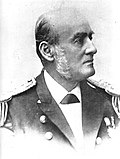
|
Juan Antonio Serra (1812-1843) |
14 May 1869 – 26 March 1874 |
Military | ||||
| 20 | File:Coat of Arms of Barzona (1855-1889).png | Juan Martines Becerra (1810-1890) |
26 March 1874 – 2 July 1874 |
Independent | ||||
| 21 | File:Coat of Arms of Barzona (1855-1889).png | Gilberto Sarría (1819-1892) |
2 July 1874 – 19 November 1877 |
Conservative | ||||
| 22 | File:Coat of Arms of Barzona (1855-1889).png | Felix Villanova Santmartín (1804-1877) |
19 November 1877 – 22 December 1877 |
Liberal | Died in office | |||
| 23 | File:Coat of Arms of Barzona (1855-1889).png | Juan Josep Olente (1822-1906) |
22 December 1877 – 16 May 1882 |
Liberal | ||||
| 24 | File:Coat of Arms of Barzona (1855-1889).png | Miquel Ferrier (1824-1911) |
16 May 1882 – 22 October 1883 |
Liberal | ||||
| 25 | File:Coat of Arms of Barzona (1855-1889).png | Gilberto Sarría (1819-1892) |
22 October 1883 – 28 July 1887 |
Conservative | ||||
| 26 | File:Coat of Arms of Barzona (1855-1889).png | Miquel Ferrier (1824-1911) |
28 July 1887 – 6 November 1888 |
Liberal | ||||
| 27 | 
|
Eusebio Tempines (1830-1923) |
6 November 1888 – 14 May 1889 |
Liberal | ||||
|
Template:Legend2 Template:Legend2 Template:Legend2 Template:Legend2 Template:Legend2 | ||||||||
|---|---|---|---|---|---|---|---|---|
| № | Portrait | President | Term of office | Party | Notes | |||
| 28 | 
|
Piero Esquibel (1821-1896) |
14 May 1889 – 2 November 1889 |
Military | Took over in coup, ushered in military era | |||
| 29 | 
|
Felipe Jordes Viergens (1841-1927) |
2 November 1889 – 1 March 1892 |
Military | ||||
| 30 | 
|
Antonio Fulbright (1848-1929) |
1 March 1892 – 18 January 1893 |
Military | ||||
| 31 | 
|
Domenique Fortuna (1842-1944) |
18 January 1893 – 23 February 1898 |
Conservative | ||||
| 32 | 
|
Miquel Ferrier (1824-1911) |
23 February 1898 – 2 March 1903 |
Liberal | ||||
| 33 | 
|
Domenique Fortuna (1842-1944) |
2 March 1903 – 14 April 1906 |
Conservative | ||||
| 34 | 
|
Andreus Soto Bouras (1860-1939) |
14 April 1906 – 1 June 1914 |
Conservative | ||||
| 35 | 
|
Camilo Fontana Buchmann (1853-1933) |
1 June 1914 – 21 May 1916 |
Independent | ||||
| 36 | 
|
Eusebio Tempines (1830-1923) |
21 May 1916 – 12 May 1921 |
Liberal | ||||
| 37 | 
|
Domenique Fortuna (1842-1944) |
12 May 1921 – 28 November 1922 |
Conservative | Fortuna's last term | |||
| 38 | 
|
Juan Francisco Brasefort (1863-1938) |
28 November 1922 – 10 November 1927 |
Liberal | ||||
| 39 | 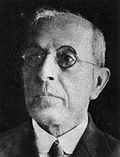
|
Paulo Artigas (1867-1940) |
10 November 1927 – 9 March 1930 |
Liberal | ||||
| — | 
|
Junta Nacional | 9 March 1930 – 10 August 1930 |
Military | ||||
| 40 | 
|
Andreus Martell (1888-1962) |
10 August 1930 – 18 January 1939 |
Military | ||||
| 41 | 
|
Piero Encines (1891-1975) |
18 January 1939 – 12 December 1943 |
Conservative | ||||
| 42 | 
|
Manuel Silva Martell (1902-1987) |
12 December 1943 – 30 November 1948 |
Conservative | ||||
| 43 | 
|
Gilberto Saldania (1885-1960) |
30 November 1948 – 16 July 1953 |
Conservative | ||||
| 44 | 
|
David Salas (1891-1957) |
16 July 1953 – 2 April 1957 |
Conservative | Assassinated | |||
| 45 | 
|
Gilberto Saldania (1885-1960) |
2 April 1957 – 2 July 1960 |
Conservative | ||||
| 46 | 
|
Julian Delbonis (1914-1965) |
2 July 1960 – 21 May 1965 |
Liberal | Killed in coup | |||
| — | 
|
Junta Nacional | 21 May 1965 – 28 November 1965 |
Military | ||||
| 47 | 
|
Gabriel Passos Ricard (1921-1984) |
28 November 1965 – 26 May 1971 |
Military | ||||
| 48 | 
|
Paulo Tenente (1918-1990) |
26 May 1971 – 14 January 1973 |
Military | ||||
| 49 | 
|
Andreus Torres (1928-2004) |
14 January 1973 – 21 June 1974 |
Military | ||||
| 50 | 
|
Antonio Henderson Grenas (1922-2011) |
21 June 1974 – 12 July 1978 |
Military | Led transition to democratic government after mass protests | |||
| 51 | 
|
Felix Casamont (1931-2018) |
12 July 1978 – 3 March 1981 |
Democratic Alliance | Deposed by coup | |||
| 52 | 
|
Felipe Abbas (1917-2005) |
3 March 1981 – 27 May 1981 |
Independent | Proclaimed president by military coup that was defeated with countercoup months later | |||
| 53 | 
|
Felix Casamont (1931-2018) |
27 May 1981 – 27 May 1986 |
Democratic Alliance | ||||
| 54 | 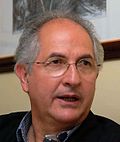
|
Juan Josep Cousins Salomon (1936-1960) |
27 May 1986 – 22 May 1991 |
Conservative | ||||
| 55 | 
|
Mario Villanova (1940-) |
22 May 1991 – 22 May 1996 |
Conservative | Investigated for corruption, in prison since 2010 | |||
| 56 | 
|
Lisette Masis (1955-) |
22 May 1996 – 4 January 2005 |
Democratic Alliance | Impeached by congress, sentenced 7 years in prison in 2008 for corruption | |||
| 57 | 
|
Piero Bos (1956-) |
4 January 2005 – 8 October 2005 |
Democratic Alliance | Interim president | |||
| 58 | 
|
Sebastian Capels (1962-) |
8 October 2005 – 7 October 2015 |
Conservative | Charged with embezzlement by courts in 2018, fled country | |||
| 59 | 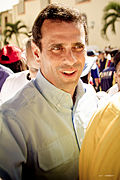
|
Mario Nadir (1970-) |
7 October 2015 – 7 December 2020 |
Democratic Alliance | Corruption rumors while in government | |||
| 60 | 
|
Lisette Masis (1955-) |
7 December 2020 – 29 April 2024 |
NOVA | Resigned due to a financial mismanagement and political coverup | |||
| 61 | 
|
Juan Mateus Haillet de Casal (1976-) |
29 April 2024 – |
NOVA | Interim president | |||
Current cabinet
The Haillet de Casal government took office as interim government in April 2024 and fully elected in November 2024. Only two cabinet ministers have been retained from the previous Masis or interim Haillet de Casal government, the rest are new appointments.
Haillet de Casal government
| Ministry | Current minister | Assumed office | |
|---|---|---|---|
| Presidente President |
Juan Mateus Haillet de Casal | 29 April 2024 | |
| Vicepresidenta Vice president |
Nelsy Milene Cordero O'Byrne | 1 December 2024 | |
| Relacías Externas External Relations |
Iván Arteta Salas | 1 December 2024 | |
| Educacía Education |
1 December 2024 | ||
| Defensa Defense |
1 December 2024 | ||
| Finanzas Finance |
1 December 2024 | ||
| Economía Nacional e eu Travall National Economy and Work |
Eveline Zubizarreta | 1 December 2024 | |
| Transportes e Mobileda Transport and Mobility |
1 December 2024 | ||
| Hazenda State |
1 December 2024 | ||
| Justicia Justice |
1 December 2024 | ||
| Sanedá e Proteccías Sociales Health and Social Protections |
1 December 2024 | ||
| Industria, Cultura e Turizmo Industry, Cultura and Tourism |
Jimena Guerrero Castell | 1 December 2024 | |
| Diretos Humanos e Egualeda Human Rights and Equality |
Katerine Osorio Reiguert | 1 December 2024 | |
| Agricultura e Devolvemento Rural Agriculture and Rural Development |
Conrado Machado | 1 December 2024 | |
| Unedá Nacional National Unity |
Itzcueye Arce Ferrier | 1 December 2024 | |
| Cienza e Devolvemento Tecnologico Science and Technologic Development |
1 December 2024 | ||
Nobility
In Barzona there have been many titles of nobility awarded under the Valonians of Castellanese colonial periods. These titles have no legal status in modern Barzona and do not provide any additional rights or benefits above a normal citizen. Titles of nobility are still sometimes used by holders as a sign of prestige and are legally proctected to prevent abuse and fraud.
Nobility of Barzona
| Title | Arms | Date of creation | Seat | Current holder | Country |
|---|---|---|---|---|---|
| Duque na Ferrante Duque de Ferrante[5] |
1805 | Fontanet Castle, Ferrante Castle | Pedro Manuel Solís de Irunberry y Vega Duke of Ferrante, Count of Fontanet, Lord of Sant-Cristove, Lord of Ferramont |
||
| Marqués na Mondier Marquis de Mondier[6] |
1220 | Mondier Castle, Baguerres Castle | Juan Josep Esguerra Meléndez | ||
| Marqués nalla Barzona Marquis de la Barzone |
1358 | A Rocha Castle, Grenas Palace | |||
| Marqués na Sant-Antonio Marqués de San Antonio[7] |
1561 | TBD | |||
| Marqués nalla Serranía Marqués de la Serranía[8] |
1564 | TBD | |||
| Marqués na Cásar Marqués de Cásar[9] |
1766 | Marqués na Cásar Estate | TBD | ||
| Conde na Fontanet Comte de Fontanet |
1299 | Fontanet Castle, Ferrante Castle | Pedro Manuel Solís de Irunberry y Vega Duke of Ferrante, Count of Fontanet, Lord of Sant-Cristove, Lord of Ferramont |
||
| Conde na Bergantín Comte de Bergantin |
1301 | Bergantin Castle∈⊾, Merliot Castle | TBD | ||
| Conde na Niesa Comte de Niesse |
1316 | Sant-Cristove Castle | Conchina Mascena Belcamp de Sainz Countess of Niesa, Lady of Almanar, Torena, etc |
||
| Conde na Vianna Comte de Vianne |
1328 | Castell na Vianna | TBD | ||
| Conde na Pasacana Conde de Pasacana |
1626 | ||||
| Conde nalla Laguna na Izalateguín Conde de la Laguna de Izalateguín |
1687 | ||||
| Conde na Cambreus Conde de Cambreus |
1696 | ||||
| Conde na Cazabianca Conde de Casablanca |
1721 | ||||
| Conde nalla Fortuna Conde de la Fortuna |
1730 | ||||
| Conde na Fonseca nalla Costa Conde de Fonseca de la Costa |
1755 | ||||
| Conde na Daube Conde de Daube |
1780 | ||||
| Vizconde na Pradet Vicomte de Pradet |
1367 | Pradet Castle | Irene de Lara y Quiróz Marquise of Campo Blanco, Viscountess of Pradet... |
||
| Vizconde na Sarras Vizconde de Sarras |
1433/1775[10] | Sarras Castle | TBD | ||
| Baron na Portin Baron de Portin |
1270 | Portin Castle | Felipe Haillet de Casal | ||
| Baron na Gordet Baron de Gordet |
1329 | Gordet Castle | |||
| Baron na Calvet Baron de Calvet |
1429 | Iban Castle | TBD | ||
| Baron na Bussot Baron de Bussot |
1456 | Montfort Castle, Simonet Palace | TBD |
Economy
Barzona has a mixed economy, with significant policy and sectoral changes from agriculture and raw material extraction to more diversification into new sectors.
Agriculture in Barzona has traditionally centered on various tropical fruits, coffee and chocolate. Fishing is also important in Barzona, primarily along the coasts. Mining, typically for copper and nickel were a big sector in the economy, though that industry has been in decline over the past 30 years. Logging is important economic activity in the jungles of western Barzona. In the last 20 years, tourism has become one of the fastest-growing industries in Barzona.
Businesses in Barzona
One of the most successful businesses of Barzona is Krispy, a fried chicken restaurant chain that originated in Barzona city and is now present nationally. Many businesses in Barzona are from other TCC nations and contribute to the economy.
Currency
Barzona used a mix of colonial currencies, under Valonians and Castellanese. In the 1700s and 1800s colonial era the system of reales was the currency. During the independence period the declared Kingdom of Barzona in Fontantet issued banknotes of 1/4, 1/2, 1, 5 and 10 pesos. Later notes existed of 20, 50 and 100 pesos as the paper money was almost worthless. During the South Tarephian Republic (1830s) a system of 16 reales to 1 escudo (like colonial era). Reales and escudos were used until 1856 and were replaced by the Barzonan peso at a rate of 8 reales=1 peso. In 1910 the gold lira replaced the peso and at the start of the great war the gold lira was changed to the fiat lira which is used today.
From the 1860s and after coins of 1, 5, 10, 25 and 50 centimos were continually produced (sometimes 2 centimos). By the 21st century most of these were worth very little, with the 2006-2015 peg of 18.75 liras to 1 tare, 10 centimos was worth half a tare cent (less than half USD cent). In 2011 the production of all coins below 10 centimos stopped as they were more expensive to produce than they were worth. The 10 centimo coin was stopped in 2013. In 2021 the 25 centimo coin was removed as legal tander, at that time was worth about 0.019 tare. The current least valuable coin, the 50 centimo coin is worth about 0.0175 USD (0.0208 tares) in 2024, and the most valuable, 20 liras is worth around 0.70 FSD or 0.833 tares.
| 2021 Coin Series "Barzona biodiversa" | |||||||||
|---|---|---|---|---|---|---|---|---|---|
| Image | Value | Technical parameters | Description | ||||||
| Diameter | Composition | Edge | Obverse | Reverse | |||||
| 50 centimos | 21 mm | Aluminum | Smooth | Coat of arms and title "Republic of Barzona" with date | Plumeria and "50 Centimos" | ||||
| 1 lira | 18 mm | Brass-plated steel | Reeded | Coat of arms and title "Republic of Barzona" with date | Toucan and "1 Lira" | ||||
| 5 liras | 24 mm | Brass-plated steel | Reeded | Coat of arms and title "Republic of Barzona" with date | Barracuda and "5 Liras" | ||||
| 10 liras | 25 mm | Stainless steel center with a bronze plated steel ring | Reeded | Coat of arms and title "Republic of Barzona" with date | Jaguar and "5 Liras" | ||||
| 20 liras | 27 mm | Bronze plated steel center with a stainless steel ring | Reeded | Coat of arms and title "Republic of Barzona" with date | Orchid and "5 Liras" | ||||
The current lira banknotes exist in denominations of 100, 500, 1000, 2000, 5000 and 10000 liras. Barzonas banknotes since the middle of the 20th century have a very articstic and colorful design. Until the early 2000s they were fully unchanged, only with watermarks and microprinting. Since then security foil strips and magnetic strips were added, images under UV lighting and by 2020 all notes feature iridescent numbers as well. Barzona implemented a program to eliminate the high value 5000 and 10000 lira notes, since most people wouldn't enounter them regularly and they were likely used by criminal entity. By 2023 the project had ended without fully eliminating the notes from circulation, but it is believed around 90% were removed from circulation and most businesses no longer accept them for payments. The exchange rate values of the banknotes of today around are: 100 liras ($3.50), 500 liras ($17.52), 1000 liras ($35.05), 2000 liras ($70.10), 5000 liras ($175.24) and 10000 liras (350.48).
| Image | Value | Dimensions | Description | Date of issue | |
|---|---|---|---|---|---|
| 100 liras | TBDxTBD mm | Admiral Mateus Barrigan | 10-04-20 | ||
| 500 liras | TBDxTBD mm | Yindis, Yavi chief | 15-02-23 | ||
| 1000 liras | TBDxTBD mm | Maria Victoria Pilpa | 20-10-22 | ||
| 2000 liras | TBDxTBD mm | Marshal Juan Piero Belmont | 15-02-23 | ||
| 5000 liras | TBDxTBD mm | Bérenger de Lestrange, Count of la Barzone | 10-04-20 | ||
| 10000 liras | TBDxTBD mm | Juan de Cornel y Mirón | 1-20-19 | ||
Infrastructure
Transport
Air travel
Barzona's de-facto flag carrier is LAT Tarephian Airlines (LAT), a joint Barzona-Tempeira-Teotiyolcan airline. The country's two main international airports are Marshal Belmont International Airport in Carante and Barzona Mateus Barrigan International Airport in Barzona. A new airport for Barzona is being built in Calderón municipality near Santa Ana Pical.
Public transit
The cities of Barzona and Carante have combined rapid transit and urban bus networks. Barzona also has a tram line. Intercity travel is done by private bus companies. These range from basic and very affordable microbuses to large double decker buses with reclining seating for long distance.
Demographics and culture
Ethnicity
The people of Barzona come from a variety of ancestries. Over half of Barzuna are mestizo, a mix of (Castellanese, Valonian) white with indigenous. White Barzuna people are the second largest ethnic group. Indigenous are found throughout Barzona, the biggest ethnic group is the Edikanana (commonly known as Yavi after the river), followed by Taqueza, Yañacuita, Nanquín, Meyfe, Onoyoyo (used to be known as Daida, a Yavi term that means angry) and Itanese. In the islands of Sainte-Elena the majority of the population is creole of Central Archantan origin. Immigration to Barzona, especially in the late 19th and early 20th century, the 1950s and early 1960s and in recent years brought immigrants from places like Costa Azul, Kalm, Mazan and elsewhere.
Language
Barzona is a multilingual nation though the Barzuna language is the most widely spoken language in the country and the only official language of the republic. In the past it was considered the language of the peasants and working class, while colonial administrators spoke Castellanese, but since the 18th century has become the main language of Barzona. Towns along parts of the border with Allendea, such as Nárvas, Castellanese is spoken and understood due to proximity to Allendea, others like Santa Margarita the Castellanese language is the most common. Valonian is spoken in Bussot, the lingua franca of the island, and a local Valonian-based patois (franquais or patois Sainte-Elenais) is the most common language in Santa Elena. Ingerish is commonly spoken in Lemon Cay.
The traditional largest indigenous language of Barzona is the Taqueza language, spoken though most of the country but because of the colonial history saw a massive decline in speakers where it is endangered in the modern period. The further north you get toward the border with Hueyapán the Taqueza language becomes less prevalent and instead Nawat dialects are more common, though also the number of speakers reduced dramatically due to colonization and government policies. In much of Yavi Department (and in neighbouring areas of Allendea), the Ediyana language is spoken by the Edikanana (Yavi) peoples. In western Esquibel department there are divergent Ediyana dialect still spoken by a few indigenous people. The related Yañacuita language is spoken in north and central Yavi department. In the south of the department Onoyoyo is spoken in a few remote communities, which is an isolate language. In Sant-Martin department, Cubutacubun is the most common indigenous language, particularly in the north and west. In the southwest area (Eu Volcan canton) a variety of the Meyfe language spoken in Allendea is spoken. Nanquín is spoken by the indigenous people of the Santa Marta islands, experts don't know the position of the language in linguistics very well, but there are some similarities with the Taqueza languages observed. In the south coast of Bussot there are still a few Itanese communities where the Itanese language is spoken, it used to be the historic language of the island but the indigenous were displaced to a few areas of the more remote south coast.
Education
Education in Barzona is divided into preschool/pre-kinder, primary school (separated into 3 cycles), secondary school (high school). Education is mandatory, and free in public schools. There is a disparity and private education and people who can afford will send their children to private schools. Many of the wealthy, political elites or nobility have sent their students to prestigious schools such as Liceu Le Maitre (ca. 1342), Liceu nalla Trineda (ca. 1310), Collegio Sant-Genis (1638).
There are several universities in Barzona, mixed between public, private and religious. The Pontifical University of Barzona was the oldest founded university of Barzona, certainly in Tarephia. It was provided with a papal bull in 1424 recognizing it as a studium generale.
| Name | Location | Founded |
|---|---|---|
| Universitad Pontificia na Barzona | Barzona | 1424 |
| Universitad Nacional na Barzona∈⊾ | Carante | 1712/1856[11] |
| Universitad Ortolica na Barzona | Barzona | 1839[12] |
| Collegio militar Cornel | Mondier | 1862 |
| Universitad na Barzona | Barzona | 1925 |
| Universitad Politecnica na Mondier | Mondier | 1972 |
| Universitad Tarefiga na Barzona | Carante | 1980 |
Collegio Sant-Genis, Carante
Religion
Ortholic church
Barzona is historically a majority Ortholic country. The influence of the Ortholic church started in the early 13th century during the Valonian colonial era. The oldest recorded church is located in the town of Sant-Miquel, consecrated around 1202. The spread of settlement by colonizers in the Marche region and up the coast in the mid 13th century saw the establishment of churches, the first diocese (Mondier) in 1267. Priests began to spread the Ortholic religion among indigenous peoples, indigenous allied with the Valonians or those who were servants and peasants of nobles and knights often were converted, there were also forced conversions in many parts. For the most parts the hostility of the indigenous to the colonizers prevented significant conversions, or many would be baptized but continue to practise their traditional religions.
Conversions to the Ortholic religion only became widespread the Castellanese colonial era with the destruction of the indigenous centers of power and religion and major efforts at conversion by religious orders and priests. By the early 1700s most of the people in Barzona were converted to the Ortholic religion (voluntary and forces). The Yavi rainforest region was the area with least influence of the church. Nárvas and Amelia had religious missions founded in the early 19th century and from there expansion of the church occured to the new towns founded along the Yavi River and a few places in the interior. Presently the Ortholic religion accounts for over 60% of the population. Until 1917 it was the state religion but got removed by the Tempines government. Today freedom of religion and protection from discrimination and persecution is the law.
| Diocese | Seat | Established | Notes |
|---|---|---|---|
| Archdiocese of Barzona | Catedral na Sant-Sebastian | 1379 | Founded as diocese in 1315 |
| Diocese of Fontanet | Catedral na Fontanet | 1448 | Separated from Diocese of Barzona |
| Diocese of Pradet | Catedral na Pradet | 1505 | Separated from Diocese of Fontanet |
| Diocese of Port-Lis | Catedral na Santa Elena | 1864 | Separated from Diocese of Pradet |
| Diocese of Safiza | Catedral na Sant-Francisco | 1990 | Separated from Archdiocese of Barzona as apostolic vicariate in 1945 |
| Apostolic vicariate of Tunancinque | Catedral na Sant-Cristove | 1966 | Separated from Archdiocese of Barzona |
| Archdiocese of Carante | Catedral primada na Santa Maria | 1592 | Established as a diocese in 1589 |
| Diocese of Mondier | Catedral Sant-Piero | 1237 | Established as diocese in 1267, elevated to archdiocese in 1349. After destruction of the original city of Mondier it was refounded as a diocese. |
| Diocese of Bergantin | Catedral na Bergantin | 1385 or 1386 | Separated from Diocese of Mondier |
| Diocese of Baguerres | Catedral Nuva na Baguerres | 1597 | Separated from Diocese of Mondier |
| Diocese of Niesa | Catedral na Santa Maria | 1773 | Separated from Diocese of Bergantin |
| Apostolic vicariate of Bussot | Cathédrale Sainte-Madeleine de Montfort | 1928 | Separated from Diocese of Mondier |
| Diocese of Cornel | Catedral Sant-Piero e Sant-Paulo | 1971 | Separated from Diocese of Carante |
| Diocese of Nárvas | Catedral Santa Ana | 2017 | Separated from Diocese of Carante to be apostolic vicariate in 1935 |
Other religions
Protestant relgions entered Barzona in the late 19th century and protestant churches are growing especially in the last 20 years, now the second largest group of religions at nearly 30%. Other religions within Barzona include Imanic, Maverick, Ibriyim/Hebraic, traditional indigenous religions and others accounting for over 4%. Today 99% of indigenous religious are located in Yavi Department among the Yañacuita, Edikanana and Onoyoyo. The Ortholic religion is well established in major towns in the indigenous areas of Yavi Department but not particularly common among smaller villages and hamlets. The Onoyoyo in particular have been very resistant to the church. Non-religious people make up a 5% of the population (atheist, agnostic, etc) and is growing, mainly in cities and urban areas.
Human development
Barzona is considered a high human development development with a HDI national average of 0.719. Since the 1980s, the democratization of the country, expansion of the economy, industry, foreign investments and rise in worker wages among other things have contributed to the improvement of Barzona from a medium development country to low high development country. Despite this there is a lot of economic disparity in the country. Two departments/federal dependency are very high development with Bussot being the most developed in HDI. 6 departments/federal dependencies are in the medium development category and Yavi department has only recently gone past the 0.600 mark.
HDI by department
| Rank | Department | 2019 HDI |
|---|---|---|
| Very high human development | ||
| 1 | Bussot | 0.806 |
| 2 | Carante | 0.800 |
| High human development | ||
| 3 | Marca | 0.789 |
| 4 | Barzona | 0.781 |
| 5 | Calvet | 0.762 |
| 6 | Daube | 0.759 |
| 7 | Serrania | 0.744 |
| 8 | Caborna | 0.724 |
| 9 | Esquibel | 0.717 |
| 10 | Centro | 0.707 |
| 11 | Aurora | 0.702 |
| Medium human development | ||
| 12 | Cayo Lemon | 0.680 |
| 13 | Niesa | 0.678 |
| 14 | Santa Elena e as Izulas | 0.665 |
| 15 | Vianna | 0.654 |
| 16 | Sant-Martin | 0.642 |
| 17 | Yavi | 0.607 |
Climate
Barzona has a fairly varied though largely warmer climate owing to its geographic location and latitude. Coastal Barzona is fairly warm and humid, but benefits from a see brreze to bring cooler weather. Mountainous areas of Barzona tend to be cooler and often perpetually springlike, with cool-cold winters, though snow is very rare aside from mountain summits. Inner Barzona (Yavi Department) is consistently very hot and humid, characterized by a a fairly rainy summer and a comparatively drier winter.
Climates in Barzona
Culture
Cuisine
The interior of Barzona has a cuisine influenced by the combination of indigenous and Castellanese dishes. Common foods throughout the country include dishes like fried chicken, polardo farcido (a stuffed chicken), empanadas, baleadas and pupusas, quesadilla na formaze (a cheese cake), casamento (rice and beans served with tortillas and breakfast). A lot of dishes are similar to other countries in the region due to the colonial history. Barzonan cuisine is moderately spicy, fragrant and hearty. In Carante and the mountains one of the most typical dishes is the simultanio (or simultanio serrano), a stew of chicken, pork, beef (sometimes also lamb) with potatoes, plantains, yuca, corn and tortillas. Certain exotic dishes can also be found in parts of the country, such as iguana, garrobo (armadillo) and others.
In Southern Barzona and coastal Barzona, Valonian based dishes are a major part of the traditional food, often using local ingredients and substitutions. Seafood is also important in the local food. A lot of the dishes such as estofat, bollabasa and others are often served with spicy chiles and boiled corn, which are not present in the original Valonian dish. In this part of Barzona you can find for example pistou soup, though the pistou is generally spicy and the soup is often done with black beans. Barzonan casolet (cassoulet) is prepared with achiote to give it a red color. A lot of dishes make use of seafood, including stews and other fish dishes like fried fish, ceviche, marmitaco. Seafood empanadas are also a specialty of the coast. In the very south east of Barzona escargotes bergantinos (escargots bergantins) as a local delicacy, stewed with a chili sauce.
In the rainforest area there is a unique cuisine based off of the indigenous culture. Dishes are mainly focused on freshwater fish, yuca, other herbs and tubers, tacazo (dish with boiled plantain) and some meat like pork, chicken and capybara. The islands of Barzona have their own unique cuisine as well. In Bussot a lot of the food is similar to southern Barzona and Broceliande with dishes like ratatouille, bouillabaise, cassoulet, fried and stewed seafood. They also have their own version of empanadas, the empanade, which is always fried unlike in the mainland of Barzona and are usually served with chiles. In Sainte-Elena and La Pitaye seafood is a major part of the cuisine, with dishes like stews, fried fish, shrimp, such as divé de pwason (combination plate of different fried fishes) and estoufad de poup (a octupus stew). A popular fast food is boquit/bokit, a flatbread sandwich. Lemon cay has a few local dishes, including conch fritters, journey cake, and many seafood and rice dishes. Islander cuisine is sometimes milder than in Barzona.
Music
Barzona has a varied musical history.
National anthem
The National Anthem of Barzona is the official anthem of Barzona, popularly known by the first line O nosta noble terra florida (Oh our noible florid land). The music is from the 1830s, a popular march of the Barzonan revolt period. The lyrics were added in 1870 and modified stlgithy, last in 1913.
| Barzuna | Castellanese | Ingerish |
|---|---|---|
| O nosta noble terra florida, A libertad! I Tirantes querian derrubarte Barzona terra belisima, |
O nuestra noble tierra florida, La libertad! I Tirantes querían derrumbarte Barzona tierra bellísima, |
Oh our noble florid land, The liberty! I Tyrants wanted to bring you down Barzona beautiful land, |
Military
The Forzas Armadas na Barzona is the armed forces. There are three branches of the military, the army, air force and coast guard. The police, as a national force is also grouped with the military. During the dictatorship period, Barzona maintained a well-equipped army, and had air force and navy that lagged behind in alocated funds and resources. Since the 1980s, more of a focus is placed on Barzona's contribution to Lycene and TCC defence, and the government embarked on a program through the 1990s that eliminated the navy in exchange for better equipped coast guard, and brought more funding to the air force to become a speciality for Barzona.
In the 19th and 20th century the military was heavily dominated by the army and there was a significant military presence in politics. Between 1833 and now there were 13 separate military heads of states or juntas and seven coups d'etat. After the end of the last military dictatorship there was a major transition and upheaval in the military to transform it to fully under the government and the rule of law. The navy was reduced and reformed to the be a coast guard, in order to reduce the cost of maintaining so many old boats and change the mission away from only national defense.
Conscription is mandatory in Barzona for males 18-40 years. In practice not every male will serve in the military and a small percentage of able bodies males serve, selected by a lottery but usually there are enough volunteers. Women are allowed to serve in the military in since 2015.
Army
- Fort militar na Barzona∈⊾
- Fort militar na Cornel: Army base, hosts the comandos of Barzona and military academy.
- Fort militar na Fontanet∈⊾
- Fort militar na Mondier∈⊾
- Fort e base na Nárvas: Joint army-air force base
- Fort militar na Pasacana∈⊾: Military base and large training area in Pasacana.
Air force
- Base aeria na Montfort∈⊾: Search and rescue
- Fort e base na Nárvas: Joint army-air force base along Allendea border on Yavi River, contains a few fighter aircraft and transport and supply helicopters.
- Base aeria na Pinos: Largest air force base, contains fighter and fighter-bomber aircraft, helicopters, transport/cargo aircraft. Is also used by the Federal States Air Force 13th Air Expeditionary Wing.
- Base aeria Sandrina: Base in the Carante area, has mostly transport aircraft and some fighter-bombers.
- Base aeria na Santa Carolina: Base in Barzona city with fighter and transport units.
Coast guard
- Base guardacosta na Bergantin: small coast guard base in south east Barzona.
- Base guardacosta na Fontanet∈⊾
- Base guardacosta na Lemon Cay∈⊾
- Base guardacosta na Villalis∈⊾: main base of the coast guard.
Gallery
Notes and references
- ↑ Yavi was known as Departamento nalla Selva before being renamed on 1 January 2016 after consultation with indigenous peoples of the area.
- ↑ Surface area for the islands, rocks and islets comprising the department totals just 102.4km².
- ↑ Surface area for the islands comprising the department totals just 4.69km².
- ↑ Surface area for the islands comprising the department totals just 6.25km².
- ↑ Title given to Count of Fontanet in 1805
- ↑ Nobleman Hughes de Montdidier was elevated to rank of marquis in 1220
- ↑ Castellanese title given to conquistador Juan de Cornel y Mirón
- ↑ Castellanese title given to conquistador Francisco de las Casas y Carvajal
- ↑ Castellanese title given to colonial governor Fernández Baeza
- ↑ Originally was titled as Baron of Sarras, elevated in 1775 to viscount
- ↑ Founded in 1712 as Royal University of Carante, nationalized in 1856
- ↑ Separated from Pontifical University of Barzona




